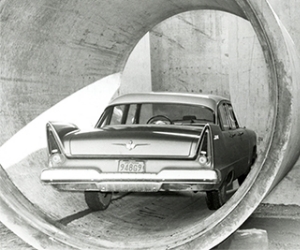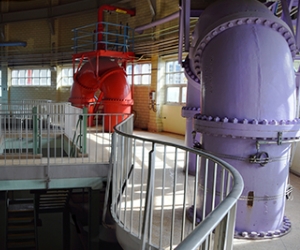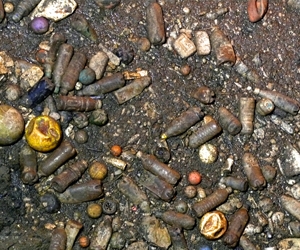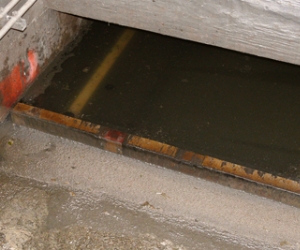Looking for the latest ALCOSAN news? The 3 Rivers Proud newsletter gives you an inside look into what is happening at the plant and beyond. Discover how ALCOSAN treats all that dirty water. Get the latest updates on the Clean Water Plan. And, learn more about ALCOSAN�s dedicated team of employees.

EXECUTIVE DIRECTOR'S UPDATE
Diving into Plant Construction
Despite pandemic challenges, ALCOSAN employees continue to work 365/24/7 treating the region's wastewater. Oftentimes jobs like these are done behind the scenes with little fanfare. But we want to continue to pull the curtain back a bit and explain how some of the water treatment work gets done.
In this issue, we will share an update on the construction activities to increase the capacity of our wastewater treatment plant, how we continue to fund meaningful source control projects in partner communities, and not forgetting to fulfill our mission that includes caring for our community. While our focus is realizing the goals of the Clean Water Plan, I’m proud to say that we also are rallying around our community in impressive ways.
The ALCOSAN family always has had a big heart, and this past pandemic-filled year was no exception. With a commitment to safety, many of our employees found ways to reach out, dig deep and be charitable to our neighbors during such a difficult year. You’ll see some of the outreach in the story below.
In addition to following the dirty water trail, take a look at some of our plant expansion construction photos. These show that we are diving right in to adjust our footprint and ready ourselves for the future.

Arletta Scott Williams
Executive Director

PLANT EXPANSION CONSTRUCTION UPDATE
One of the more challenging and exciting pieces of ALCOSAN’s Clean Water Plan is the expansion of our wastewater treatment plant. Sitting on 59 acres that is bordered by the railroad on one side and the Ohio River on the other, ALCOSAN doesn’t have a lot of space to grow. But thanks to the ALCOSAN staff, we have a creative path forward.Below are some highlights of ongoing construction at the ALCOSAN wastewater treatment plant. Check out the photos showing the first visible signs of change.
- New flow meters were installed recently in the main pump station to help monitor the amount of wastewater entering the plant.
- The north-end plant expansion has begun with the demolition of our sodium hypochlorite building, making room for a new final disinfection tank to be built starting mid-2021.
- Construction of a new chemical building which will house the sodium hypochlorite and sodium bisulfite feed and storage systems. This will be built next to the new final disinfection tank.
- Work on a new river wall is slated to begin in early 2021. The wall will be secured with king piles that provide a bulk of the wall’s structure. These piles will be anchored by tiebacks that will be drilled and cemented into the rock bed for stabilization. The wall surface will be made of approximately 1,000 feet of steel sheeting, viewable from the river, and back-filled from the plant-side.
- Once the new river wall is constructed, aggregate stones, large rocks and boulders will be placed in a staggered fashion along the river bank below the wall to provide a foraging, security and resting habitat for macroinvertebrates and fish.
- We also are looking forward to the addition of two new final clarifiers at the north end in 2024.
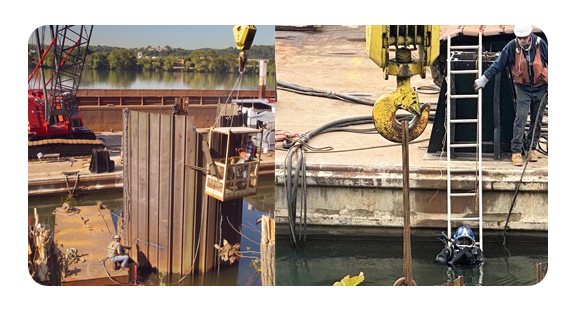
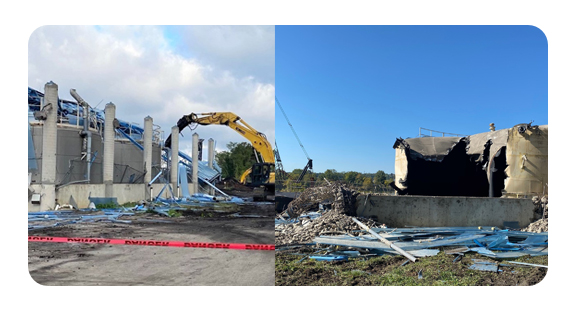
Stay tuned for more updates! For the latest information and to learn more, visit our Clean Water Plan page.

GROW AWARDS HELP MUNICIPALITIES WITH SOURCE CONTROL PROJECTS
ALCOSAN’s successful Green Revitalization of Our Waterways (GROW) program recently awarded $15.1 million in grant offers to 23 municipalities and municipal authorities for meaningful source control projects. These 27 projects, ranging from sewer separation to green stormwater infrastructure, are projected to remove 48 million gallons of overflow volume per year.Three projects – Pittsburgh’s Wightman Park green stormwater infrastructure and two sewer separation projects in the Borough of Crafton – took advantage of the new funding cap with a combined award of $7,712,559 for the three. For a complete list of the awardees, please visit our GROW Program page.
Earlier in 2020, ALCOSAN released Controlling the Source, a scientific-based, area-specific evaluation of all types of source control that provides municipalities information on where projects can be completed that both are cost-effective and provide the most overflow reduction. Eight concepts identified in Controlling the Source were awarded funding in this round (Avalon, Bellevue, Brentwood, Carnegie, Crafton, Wightman Park, Rankin and Wilkinsburg).
Created by ALCOSAN in 2016, the GROW program’s first four grant cycles offered grants worth $28 million for 101 projects, leveraging another $25 million in municipal, authority and third-party funding. In all, those projects are expected to reduce the volume of overflows into the region’s waterways by nearly 140 million gallons.
Any municipality or municipal sewer authority within the ALCOSAN service area is eligible for GROW grants. The sixth phase will begin later this year, and ALCOSAN already is scheduling informational meetings to assist municipalities in the application process.
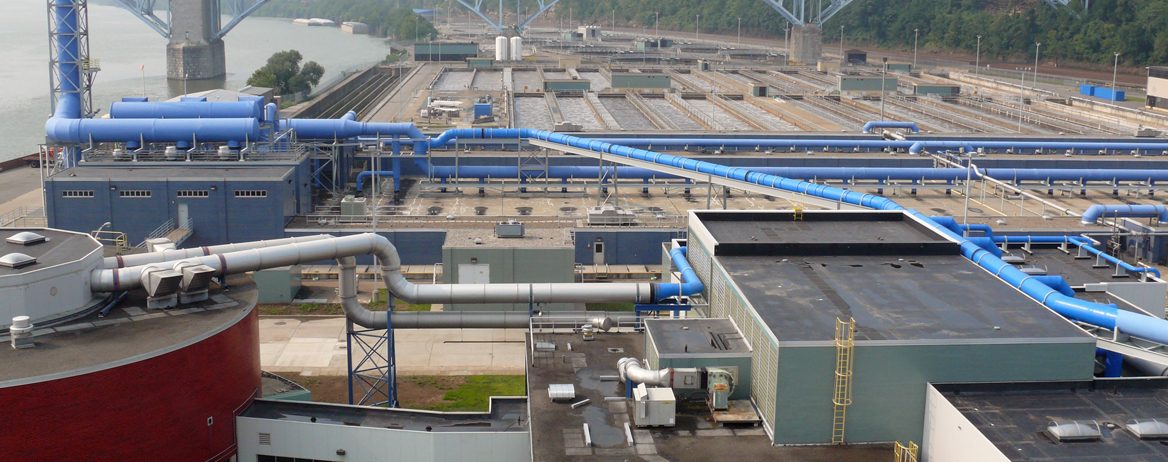
DIRTY WATER TRAVELS,FROM YOUR PLACE TO OURS: Part II
As we rejoin the wastewater treatment journey from your place to ours, recall that trash and large solids were removed from the dirty water and prepared for landfill disposal. The remaining sludge, made of smaller particles, grease and scum, also were skimmed away for proper disposal.
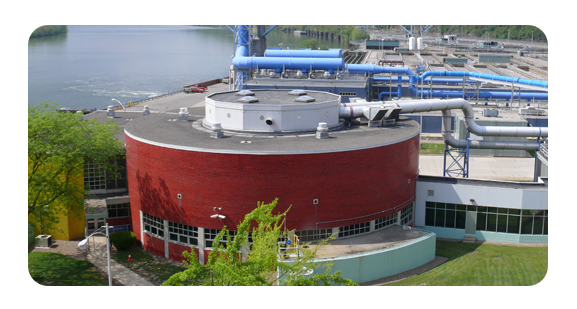
Although somewhat cleaner, there still is a lot of work to be done to finish the dirty water treatment journey. It’s now time for the secondary treatment, which some here call dessert time for naturally occurring bugs.
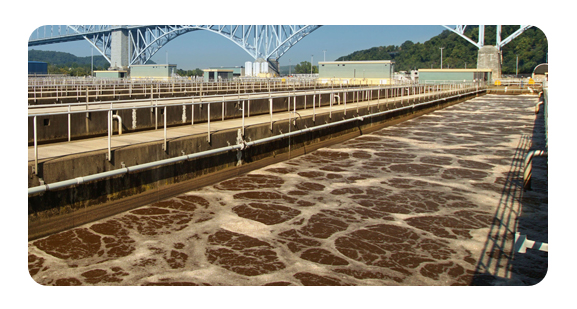
Our expert inhouse operators determine precisely how to treat up to 250 million of gallons of dirty water each day. ALCOSAN’s eight aeration basins are filled with secondary wastewater that is mixed with diffused, compressed air. This is done to help maintain a healthy colony of microorganisms during this activated sludge process.
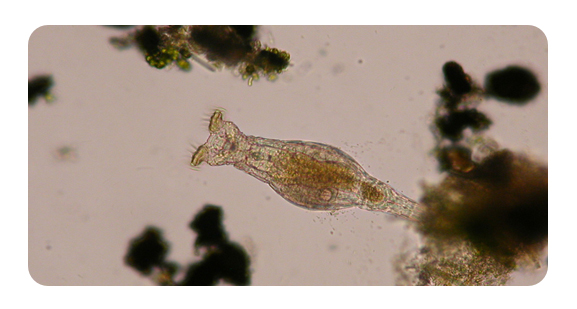
The water flows through the tanks for four hours, with the air bubbles causing the bugs to roll and mix within the activated sludge. The microorganisms gobble up nutrients and break down remaining organic matter into harmless by-products.
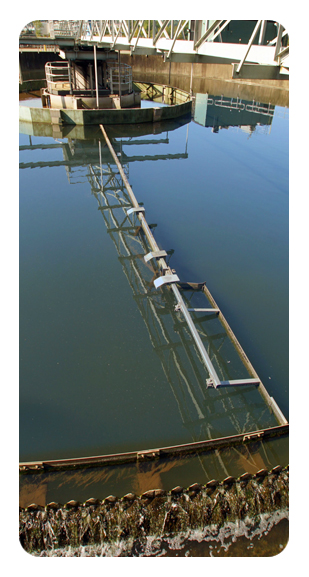
The secondary treatment process continues by moving the water through secondary clarifiers. Here, the microorganisms return to the aeration tank for some more munching, or they are pumped to the dewatering facility for disposal. This clarification process is distributed over 16 units and takes two and one-half hours to complete.

We now are more than half-way to our discharge destination. Next, the wastewater makes three passes through two disinfection chlorine contact tanks. Any remaining bacteria are eliminated with a potent disinfection solution of sodium hypochlorite, which is 10-to-15% chlorine bleach. Depending upon the flow rate, this important step can take up to 30 minutes to complete.

The last stage requires rigorous monitoring. Sodium bisulfite, used to dechlorinate the water to eliminate the formation of harmful biproducts, is added using coarse bubble diffusers.
The reclaimed water travels slowly through the tank channels. Some say that this phase reminds them of a lazy-river amusement park ride. Even the local ducks are known to stop in for a relaxing float now and again.
Since that first drop of dirty water entered the main pump station, the water has been traveling this journey between nine to 12 hours. The treatment process is complete and we’re ready for the big push. The force of gravity rushes the fully treated wastewater downward and out into the Ohio River at a rate of approximately 140,000 gallons per minute.
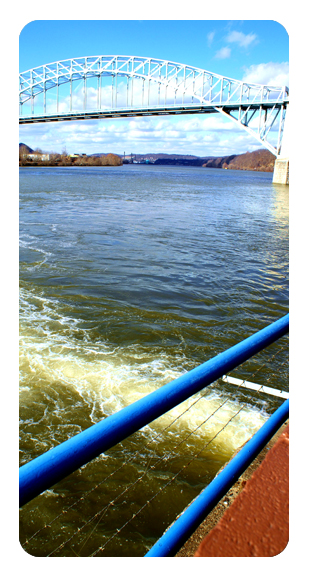
It’s here that you can really see that we take our environmental stewardship responsibility seriously. Every day, we treat wastewater and return it to the Ohio River cleaner than the water in the river.
Although we were able to treat and reclaim 99% of the water, the remaining solids need to be handled appropriately. In an average year that adds up to a whole lot of tons of waste. The next chapter in our clean water journey will touch on how we efficiently draw energy from that waste.

HELPING HANDS-ON TEACHING IN A VIRTUAL WORLD
ALCOSAN helps formal and informal education partners to network and share best practices through its Science and Environmental Education Advisory Collaborative (S.E.E.A.C.) quarterly workshop series.S.E.E.A.C. offers teachers unique opportunities to gain information about real-work environmental and engineering applications related to water. These Scholastic Outreach workshops also offer teachers the chance to earn ACT 48 continuing education hours at no cost.
To meet with the safety demands of the times, ALCOSAN shifted to a virtual format for its teacher workshop. Their first session in the 2020-2021 series focused on adapting and applying hands-on student activities that could fit into virtual, in-person and hybrid classroom settings.
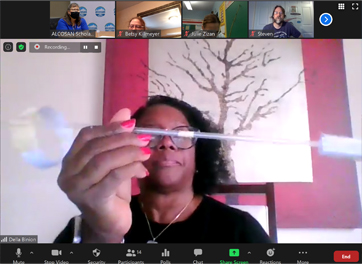
Educator participants were introduced to three activities: creating towers, solving mysteries and coding robots to work from a distance. While working through the activities, the educators discussed and discovered some of the best teaching formats for student learning within a variety of environments. Engagement was at a high level as teachers shared their own enthusiasm for sharpening virtual learning skills that play a critical role not only in our everyday lives, but especially during the COVID-19 pandemic.
The second workshop, Virtual Engineering, engaged teachers in hands-on challenges using the engineering design process. Service providers and teachers from nine districts and service areas joined in the learning.
Participants explored hovercraft, found simple machines in the objects around them, discovered how the natural world inspires innovation, and took on a fun challenge to build a better hoop glider.
Prototypes of hoop gliders were tested and redesigned by using basic problem-solving skills. There also was considerable enthusiasm when the educators moved to online CAD software to complete the assignment of designing a touch-free key to support COVID-19 safety practices.
The learning never stops! Share this with a teacher you know. Future workshops include a focus on technology and much more. Visit the ALCOSAN Scholastic Outreach and Educational Professional Development program.

ALCOSAN FAMILY COMMITTED TO CHARITABLE EFFORTS
The job we do at ALCOSAN is non-negotiable and essential to protecting public health; it’s a job that we do all day, every day, without exception. Even in the midst of a pandemic. While we take this responsibility seriously, our employees know how fortunate we are to continue working, and that we need to help those less fortunate.During 2020, the COVID-19 virus put so many things on hold, but the ALCOSAN team enhanced its commitment to charitable outreach. The year started with our annual United Way campaign and Jeans Days for Tickets for Kids. Then our employees really stepped up to the plate, raising nearly $22,500 for the Pittsburgh Food Bank in our annual Purple Shirt Celebration.
Yearly, the Authority holds a Turkey Bowl fundraiser for the KDKA Turkey Fund to help make sure families have enough to eat. Usually the event includes a pot-luck lunch and a cornhole tournament. Of course, the pandemic nixed the normal activities, so our employees put their heads together and created a successful, socially distanced putt-putt fundraiser tournament. Proving extremely popular, the event raised $3,775, which was matched by PNC Bank for a total of $7,750.
Overall, the Authority’s employees donated approximately $46,500 in 2020, helping to ease the burden of the pandemic for those in need.
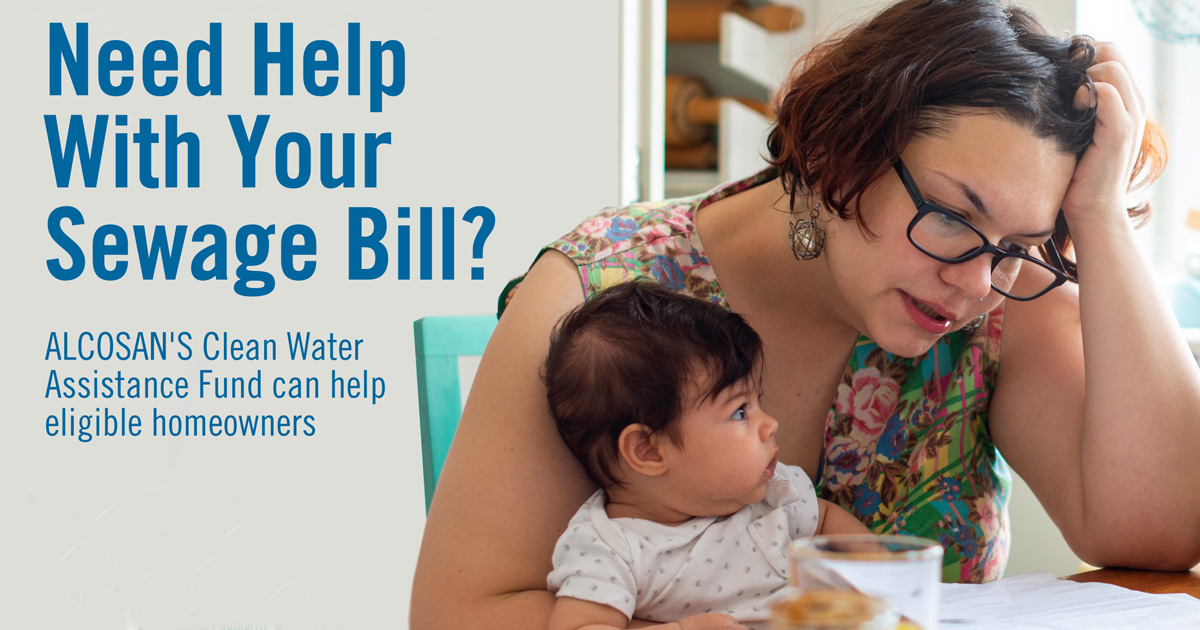
Need Help With Your Sewage Bill?
Did you know that ALCOSAN has a Clean Water Assistance Fund? This program for low-income homeowners who are served by ALCOSAN can help with your sewage bill. See if you qualify by visiting www.dollarenergy.org or by calling Dollar Energy Fund at 1-888-282-6816.
Executive Director’s Update
Welcome to our inaugural 3 Rivers Proud newsletter, where we hope to engage, educate and perhaps entertain you. Here, you’ll learn more about how ALCOSAN, on a daily basis, provides environmentally conscious wastewater treatment for 83 municipalities in Allegheny County. Along the way, you may discover just how ALCOSAN manages to treat all that dirty water.
You’ll get a peek into the journey ahead as we realize the Clean Water Plan and satisfy our Modified Consent Decree commitments. We will be sure to highlight how we accomplish the following:
- Prevent excess water from entering the sewer system.
- Increase use of adaptive water technologies and green management.
- Work with municipalities to assume ownership of sewers.
- Expand ALCOSAN’s wastewater treatment plant.
- We’re honored that you’ve connected with us to help the region protect the community’s health, and to be wise stewards of our public and natural resources.
Here’s to remaining 3 Rivers Proud!

Arletta Scott Williams Executive Producer

Virtual Open House 2020
ALCOSAN isn’t going to let the pandemic keep us from “hosting” you at our annual Open House! This year, we’re taking the event virtual on September 12, 9 a.m. at alsocsan.org. Visit our website for the fun activites that everyone enjoys each year. Mad Scientist, plant and lab tours, Science Rocks and much, much more! We hope to “see” you in September!

Dirty Water Travels, From Our Place to Yours
Everyone flushed. You washed this morning’s dishes. And it’s Pittsburgh, so it rained a few minutes ago and the kids are racing anything that floats down the street’s gutters, before it topples into the nearest storm drain.
But do you know where it all goes from there? Through a brief four-part story, we’ll follow a dirty-to-clean water journey, from your place to ours. Dirty water that reaches ALCOSAN is processed through two paths: liquids and solids.
Below is the first part of the liquid journey.
Gravity and pumps transport dirty water through a neighborhood’s sewer infrastructure (not owned by ALCOSAN) and then into ALCOSAN’s large interceptor lines, which terminate at our low-elevation wastewater treatment plant on Pittsburgh’s Northside.
An average of 215 million gallons of wastewater enter the plant’s wet well each day, and sometimes more when we have heavy rain or snowmelt. The wet well measures 40 feet in diameter and reaches about 150 feet below ground. At any given time, the well accumulates more than 580,000 gallons of circulating, dirty water.
Six huge pumps use 12,000 HP to move the dirty water to above ground level, allowing the liquid to move in a controlled, downward treatment journey throughout the remainder of the plant.
The first step removes large solids and grit in the plant’s headworks area. Here, dirty liquid is screened by racks with bars spaced about three-quarters of an inch apart. Often Styrofoam, rags, leaves, and an occasional dollar bill are screened. You can use your imagination for what else gets strained out at this stage!
The large debris is regularly raked clear, with the resulting trash compacted for landfill. The bars capture up to 100 tons of large debris every year. Overall, water stays in this bar screen area for a brief four minutes before moving to the next stop.
The water flows on through one of six grit channels. Grit here often includes storm run-off from roads, like asphalt cinders, pebbles and sand. These aerated chambers measure 20 feet by 60 feet, and detain approximately 125,000 gallons of water for nearly four minutes at a time. The aeration helps to settle the heavy inorganic material to the bottom of the tank, where it is scraped and collected for removal. The lighter, lingering organic particles remain suspended in the water for the next stage. Just how much grit is there? Annually, 1,300 tons!
Next, a slow-down begins, as slightly cleaner water enters into one of nine primary sedimentation units. Ever smaller particles settle to the bottom of this tank. These tanks measure 280 feet in length, 15 feet deep and 67 feet wide. Accumulated scum and grease that traveled the sewers float to the top and are skimmed away with automated paddles.
For now, we’ll ask you to hold the thought of two million gallons of dirty water sitting there for two hours, settling, and preparing for bugs? Yes, tune in to the next issue to learn how the wastewater continues its liquid journey, from your place to ours, and is aided by the intentional addition of helpful bugs!

Clean Water Plan Update
May was a very exciting and active month for ALCOSAN and its Modified Consent Decree, as the legal process came to an end with approval by the United States District Court for the Western District of Pennsylvania. The Modified Consent Decree is the legal document that informs ALCOSAN’s Clean Water Plan, the blueprint for reducing seven billion gallons of overflows from flowing into local rivers and streams.
ALCOSAN has been involved in negotiations with the United States Department of Justice, the United States Environmental Protection Agency, the Pennsylvania Department of Environmental Protection, and the Allegheny County Health Department to come into compliance with the Clean Water Act (the Water Infrastructure Improvement Act). The Act states that the Authority must improve the water quality of our rivers and streams by reducing combined sewer overflows and eliminating sanitary sewer overflows.
The Modified Consent Decree (1) allows ALCOSAN to continue forward with its Clean Water Plan, a blueprint for reducing seven billion gallons of overflows from flowing into local rivers and streams, (2) extends time frames in which ALCOSAN must implement its Clean Water Plan, and (3) allows ALCOSAN to propose future amendments to the Clean Water Plan, which might include replacing some proposed control technologies with green infrastructure controls. This Modified Consent Decree replaces the current Consent Decree that was entered on January 24, 2008.
To reach the Consent Decree goals, the Clean Water Plan will focus on four key areas:
1. Preventing excess water from entering the sewer system
This involves use of the latest technology including green infrastructure such as bioswales and rain gardens; lining and repairing pipes to prevent groundwater from seeping into the system; diverting clean streams so they do not flow directly into sewers; and sewer separation projects. To advance this effort, ALCOSAN established Green Revitalization of Our Waterways (GROW), a multi-year, multi-million-dollar grant program that funds projects that municipalities and sewer authorities might not be able to afford otherwise.
2. Increasing adaptive management and conveyance capacity
ALCOSAN will use adaptive management and base long-term planning on data from green infrastructure, flow-reduction projects, and the latest technology. This provision in the Modified Consent Decree demonstrates the willingness of the parties to the order to consider the use of green infrastructure and other flow-reduction projects in lieu of gray infrastructure where it can be shown to be as impactful in reducing overflows. Under the Modified Consent Decree, ALCOSAN will also expand its conveyance system by adding pipes, diversion structures and tunnels.
3. Regionalizing multi-municipal sewers
ALCOSAN is making a good faith effort to assume ownership of certain multi-municipal trunk sewers and related facilities. ALCOSAN has conducted closed-circuit television inspections of these sewers, determined what repairs and improvements are necessary, and is now in the process of working with the municipalities to transfer ownership and make the necessary repairs. With the anticipated addition of more than 200 miles of sewer infrastructure as ALCOSAN’s responsibility, the system will be more efficient and seamless and it will reduce some of the burden on municipalities.
4. Expanding the wastewater treatment plant
The current capacity of 250 million gallons per day (mgd) makes ALCOSAN the largest wastewater treatment system in the region, but greater capacity is needed. The main pump station already has been upgraded and a new vehicle maintenance garage has been built outside the plant gates, making room to expand the treatment operation. ALCOSAN will expand wet weather treatment capacity of the plant from 250 mgd to 480 mgd and wet weather headworks and disinfection capacity to 600 mgd.
ALCOSAN first entered into a consent decree in 2008 and completed development of a plan to address wet weather overflows in 2012. Although comprehensive, the public challenged ALCOSAN to make the plan more affordable for ratepayers, yet flexible enough to take advantage of advances in the field of green stormwater and wastewater management. In order to meet those requests, further negotiations were necessary and occurred.
For more information about the Authority’s Clean Water Plan, please visit www.alcosan.org/our-plan.

Alcosan Helping Students Explore Careers in Wastewater
Did you know that besides providing environmentally conscious wastewater treatment to our customers in Allegheny County, ALCOSAN is also helping engage local students with opportunities for internships and job shadowing at the wastewater treatment plant on Pittsburgh’s Northside?
Our programs offer individual as well as team building skills that allow students to gain hands-on experience in a diverse work environment. Since 2015, a total of 27 students have been exposed to every division of ALCOSAN’s organization, working alongside Authority employees in areas such as Operations, Engineering, Mechanical Maintenance, Purchasing, and Customer Service and Billing, as examples. Students who have held these internships have majored in a variety of fields; such as nuclear engineering, environmental sciences, biochemistry and molecular biology, civil engineering, business management, communications and electrical trades.
ALCOSAN’s Scholastic Outreach and Education department accepts internship applications for fall, spring and summer semesters from students who reside within ALCOSAN’s service area and meet the following requirements:
- High school students in grades 10-12 (including recent high school graduates)
- College students in their sophomore through senior year
- Post-graduate students
- College graduates who graduated within 12 months of requesting the internship
For more information on the programs and how to apply, please visit https://www.alcosan.org/educational-activities/internships-wave-program.

Summer Sweepstakes Returns August 3rd!
It’s time for you to get in on the fun with ALCOSAN’s 2020 Summer Sweepstakes, which runs August 3-September 12. Each week you can become eligible to win prizes by participating in a few simple activities at 3RiversProud.com/sweeps. In the process, you will also learn a little more about how ALCOSAN is working to improve the water quality of our region’s rivers and streams. New this year, participants will have the opportunity to earn an extra entry each week. Be sure to check out ALCOSAN’s Facebook page to learn how!
A winner will be selected on every Monday from the entries submitted during the previous week. There are six prizes up for grabs:
- 1. Giant Swag: Get a little extra “super” for your market trip with a $50 Giant Eagle gift card and some swag from ALCOSAN and KDKA.
- 2. Sandwiches and Sights: Start with some famously delicious sandwiches using a $50 gift card from Primanti Bros. Then take in the sights with two (2) round trip incline tickets as well as ALCOSAN swag.
- 3. Soarin’ Style: Upgrade your style thanks to a $75 gift card from American Eagle Outfitters as well as some swag from ALCOSAN.
- 4. Spanish Seafood Supper: Get ready for a special night out with a $100 Mallorca gift card and swag from ALCOSAN.
- 5. Spa and Shoes: Relax your cares away with $100 Sewickley Spa gift card. Then hit the pavement with a $50 gift card from Little’s and some ALCOSAN swag.
- 6. Family Feast: Take your taste buds to Mt. Washington with a $150 gift card to LeMont. And we’ll give you an ALCOSAN swag bag for later!
Winners will be announced on www.alcosan.org/sweeps. You can also watch for the results on ALCOSAN’s Facebook, Twitter and Instagram pages. Good luck and we hope you enjoy ALCOSAN’s 2020 Summer Sweepstakes.
Quick Links


